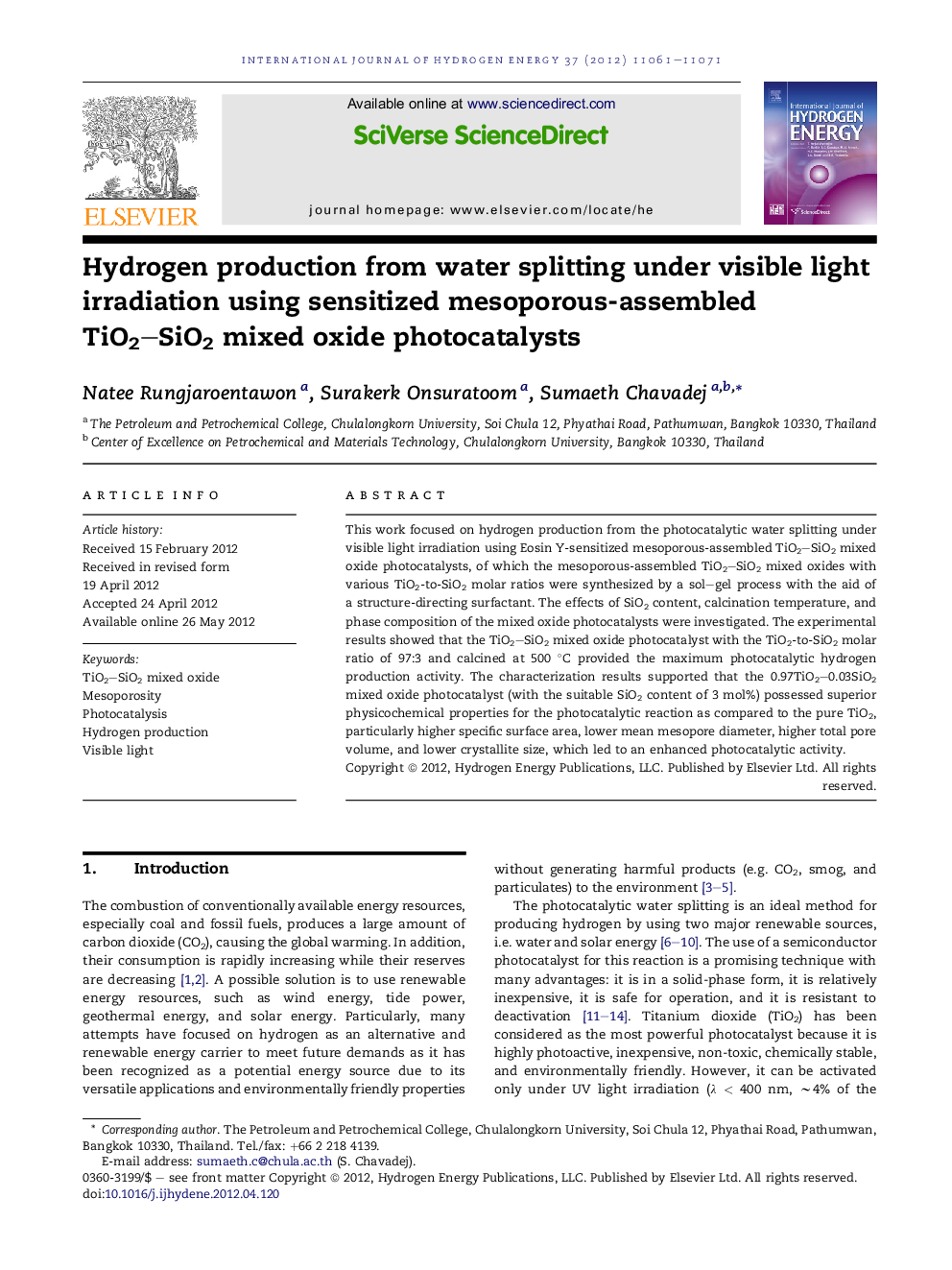| Article ID | Journal | Published Year | Pages | File Type |
|---|---|---|---|---|
| 1276270 | International Journal of Hydrogen Energy | 2012 | 11 Pages |
This work focused on hydrogen production from the photocatalytic water splitting under visible light irradiation using Eosin Y-sensitized mesoporous-assembled TiO2–SiO2 mixed oxide photocatalysts, of which the mesoporous-assembled TiO2–SiO2 mixed oxides with various TiO2-to-SiO2 molar ratios were synthesized by a sol–gel process with the aid of a structure-directing surfactant. The effects of SiO2 content, calcination temperature, and phase composition of the mixed oxide photocatalysts were investigated. The experimental results showed that the TiO2–SiO2 mixed oxide photocatalyst with the TiO2-to-SiO2 molar ratio of 97:3 and calcined at 500 °C provided the maximum photocatalytic hydrogen production activity. The characterization results supported that the 0.97TiO2–0.03SiO2 mixed oxide photocatalyst (with the suitable SiO2 content of 3 mol%) possessed superior physicochemical properties for the photocatalytic reaction as compared to the pure TiO2, particularly higher specific surface area, lower mean mesopore diameter, higher total pore volume, and lower crystallite size, which led to an enhanced photocatalytic activity.
Graphical abstractFigure optionsDownload full-size imageDownload as PowerPoint slideHighlights► Mesoporous-assembled TiO2–SiO2 mixed oxides were synthesized by a modified sol–gel process. ► Mesoporous-assembled TiO2–SiO2 mixed oxides were applied for photocatalytic sensitized hydrogen production. ► SiO2 incorporation to the mesoporous-assembled TiO2 resulted in much higher thermal stability. ► SiO2 incorporation with suitable contents improved physicochemical properties. ► TiO2–SiO2 mixed oxide with TiO2-to-SiO2 molar ratio of 97:3 showed maximum hydrogen production activity.
